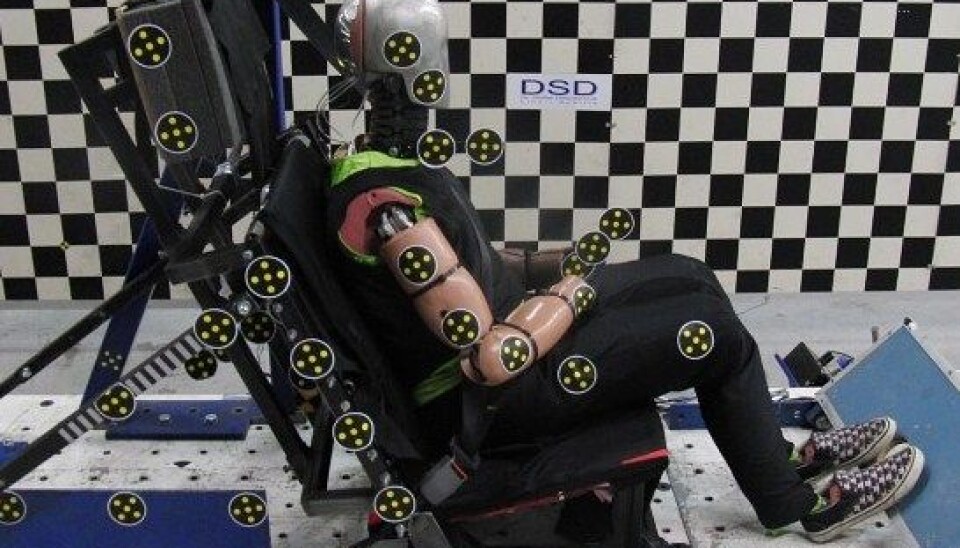
Gender equality for crash test dummies, too
Crash test dummies are always male. That means today's cars don't protect women as well as men. Swedish researchers think the solution is a female crash test dummy -- and they have made one.
Crash tests by Swedish traffic researchers show today’s car seats are too firm to protect women against whiplash injuries caused by rear-end collisions. And there's a good reason for this: the crash test dummies used by car manufacturers to develop safety features are all male.
The Swedes have now created the world’s first female crash test dummy to help manufacturers make vehicles that protect both sexes from whiplash injuries, not just men.
Like a trampoline
Rear-end collision tests with real, live people at slow speeds show that women are thrown forward faster than men, because the back of the car seat is less liable to give way for a lighter body than a heavy one.
“Women are generally lighter than men, so they are catapulted forward more quickly, and subject to greater acceleration. A woman is also thrown forward hard against the seatbelt,” said Anna Carlsson from Chalmers University of Technology in an interview with the Norwegian Broadcasting Corporation (NRK).

But what should car manufacturers do differently?
“The seats should be less stiff, more pliant. When a car is hit from behind, the seat back acts like a trampoline and catapults us forward. I’d like to see seat backs that are better cushioned, made a little softer,” Carlsson said.
Men better protected
The female crash test dummy was the brainchild of Astrid Linder of the Swedish National Road and Transport Research Institute (VTI). She is head of the EU project ADSEAT, which has as its goal to provide guidance on the best ways to evaluate seat designs so that they reduce whiplash injuries.
Linder found that new cars with whiplash protection were primarily constructed with men in mind. It's not surprising, when you think of it, though, since crash test dummies are designed to mimic a male driver's relative weight and anatomy.
“I saw information in the injury statistics showing that men were better protected from whiplash in the new systems and that women were still at higher risk,” she says.
“The goal is to make everyone in cars as well protected as possible,” Linder says.
“As a general rule that entails designing safeguards that give priority to the least robust segment of the population. The opposite approach doesn’t necessarily work, as we have seen in whiplash protection.”
The female test dummy BioRID 50 F, developed at Chalmers University of Technology in cooperation with VTI and Volvo, is still just a rough prototype. The researchers hope to develop it into a full-fledged crash test dummy.
Linder says the automotive industry has expressed an interest in conducting tests with female crash test dummies, starting with virtual ones in computer simulations.
“Hopefully a test method will evolve that also involves female dummies, which will prod car manufacturers into installing protection systems that automatically adjust the seats to each individual. Both men and women of various body sizes would benefit from that,” Carlsson said.
---------------------------
Read the Norwegian version of this article at forskning.no
Translated by: Glenn Ostling







